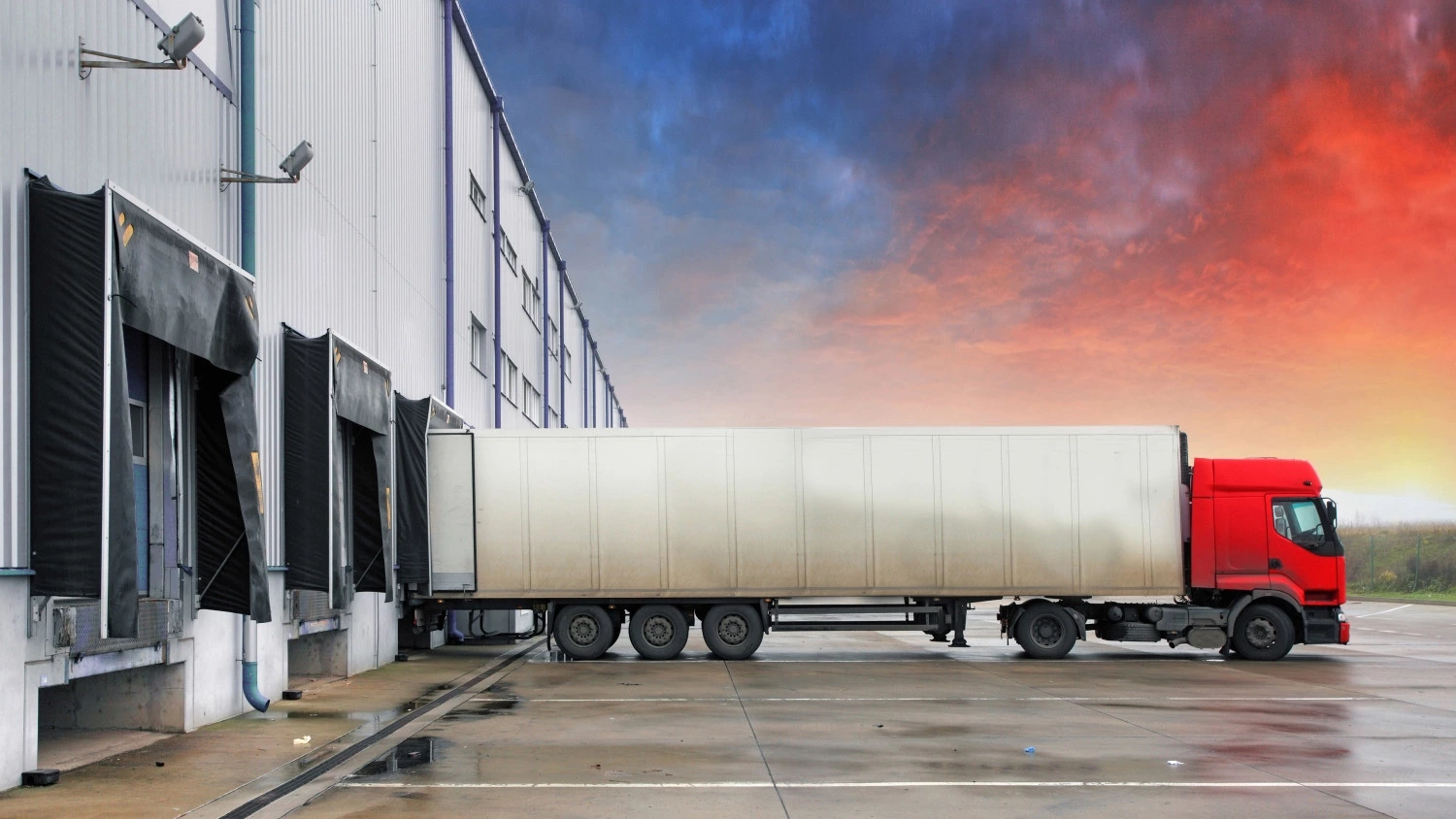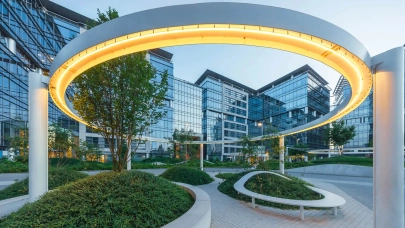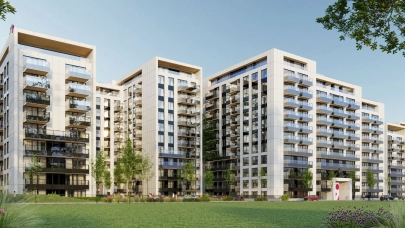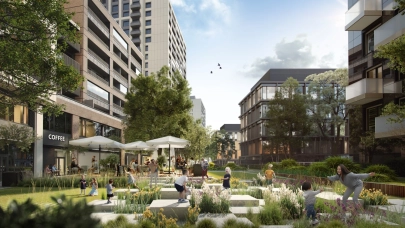
The I&L sector in the CEE-17 has become one of the most sought-after asset types since 2019, after offices and residential according to Colliers International, CMS and Randstad. The report revealed that some of the key challenges in this sector include the availability of land and property in locations that meet both the developers and end-user expectations, along with the availability and reliability of utilities, connectivity to transport infrastructure, the availability and skills of the labour pool, and access to investment incentives.
Industrial and logistics real estate markets across the CEE-17 region are all at different stages of maturity, both in terms of size and the pace of development. The total supply of modern industrial and logistics (I&L) stock across the CEE-17 is well over 50 million sqm in total. From this supply, the current availability can be categorized as low, with the majority of markets recording vacancy rates of below 5%.
Strong demand from the I&L sector
Kevin Turpin, Regional Director of Research, CEE explains: “Demand from the I&L sector in the CEE region over the past few years has overall been strong and has been driven by the 3PL, retail and distribution sectors, followed by the light production, automotive and FMCG sectors. During the pandemic and looking forward, we do expect to see some changes to the order and volume of this demand with sectors such as e-commerce, data centres and specialist storage increasing their requirements. Despite this, the CEE region has a long industrial tradition and remains very attractive to manufacturers ranging from the full spectrum of automotive parts, through to aerospace, metals and plastics, complex electronics, home appliances, food, beverages, pharmaceutics and medical equipment”.
“While we expect e-commerce to grow at a more rapid pace and drive demand through these challenging times, we also expect that over the longer term, we will see greater demand from producers/manufacturers to bring back parts of their supply chain closer to Europe to mitigate certain risks that we have seen in the past few months. In future, this may mean that larger inventories are stored or produced closer to the end consumer which could also translate to greater demand for I&L space”.
Stable rents
Rents across the CEE-17 region have been largely stable, with growth recorded in the most sought-after locations, and where availability is limited. We expect this trend to continue, particularly as demand has been good and construction costs have also been on the rise over the past few years. Typical headline rents across the region range between €2.9 and €5.5 per sqm per month although markets in earlier stages of development can currently reach upwards of €7.0 per sqm per month.
Land prices and constructions costs
In terms of delivery costs, we have also gathered indicative prices for land (assuming permits are in place) and hard construction costs (for a standard warehouse). Typical land prices across the region vary between €10 and €80 per sqm, however, due to the scarcity of land in the most sought-after locations, particularly those closer to major cities or economic/productive hubs, prices can rise up to between €120 and €150 per sqm.
Typical hard construction costs for a "standard" warehouse across the region range between €300 and €600 per sqm. Higher costs have been reported in some markets but overall, a combination of increased labour and materials costs have driven up construction costs by as much as 25% or more over the past few years.
Sector trends
Among the sectors that could be the most impacted by the pandemic is the automotive industry. In CEE there are more than ten of the world’s major car manufacturers, plus all of the parts, transport & logistics and dealer companies that employ hundreds of thousands of people. Hence, any major fall-out in this sector will have a sizeable economic impact.
Pharmaceutical, Third-Party Logistics and e-Commerce companies are also strong players in CEE but their futures seem to look much brighter. Once a vaccine for COVID-19 is invented it needs to be produced, stored and distributed at unprecedented volumes, so we can assume that part of this effort will be carried out from CEE.
E-commerce and 3PLs have been gradually growing over the last decade in CEE. In the logistics sector, you will find all of the big names from DHL, UPS, FedEx, etc. The increase in demand for online goods and services including groceries, DIY/hobby, gardening, sports and a variety of electronics and online entertainment is likely to mean increased demand for I&L property over the years to come.
Legal incentives for investment
The majority of CEE-17 countries have committed to encouraging investment in the I&L sector through at least one method of incentivisation. These legal incentives vary country by country, but examples typically include support programmes, non-repayable grants/state funding, corporate tax reductions/exemptions, simplified regulations, enhanced administrative support etc. The various incentives are intended to do one or more of the following: support innovation, increase economic activity, create new employment opportunities, improve productivity or increase market competitiveness.
Lukas Hejduk, CMS partner and Head of Real Estate in CEE, comments: “Given industrial output is near record levels in most CEE countries, it is undeniable that the region has become a magnet for manufacturing and logistical operations. Countries in CEE have attracted significant levels of foreign investment, thanks in part to the region’s well-educated workforce, rapidly developing infrastructure and the lower labour costs compared to Western Europe. In addition, there are bespoke legal incentives available to I&L investors in many countries. Legal advisers can play an important role in not only helping to mitigate risk but in steering investors to benefit from innovation and opportunities to flourish.”
While some countries in the region (Latvia, Montenegro, Serbia and Slovenia) do not offer incentives specifically targeted at the I&L sector, businesses in these countries may benefit from existing general legal incentives. The report’s country-by-country breakdown of the opportunities available enables investors to better identify the prime location for their business or properties.
Labour market and investments - changes in trends
The CEE region has always been among the first destinations in the minds of foreign investors, from the production and logistics sectors, when looking for savings on personnel costs and availability of the workforce. This interest is not weakening, but the reasons have changed.
Paweł Kopeć, Head of Enterprise Solutions Center in Randstad, clarifies: “Cost is still an important factor but investors also appreciate the stable development conditions, which are symbolized by only slight changes in the unemployment rate in the CEE countries after the COVID-19 outbreak. The qualifications of the employees become also essential for new investors. And despite the low unemployment at the national level, there are still areas with high availability of well-educated and well-prepared staff for work.
Pioneers who decide to invest in these locations have a chance to achieve something unique on the labour market – a loyal and committed staff. However, in the short term, companies are rather rebuilding their workforce than increasing headcount, still having in mind the possibility of a second wave of COVID-19. As a result, we predict that the temporary workforce will become an even more popular solution on the market. The pandemic also made further changes to the way employees look at their future employers. In the near future, we expect that job security and a company’s financial stability will close the gap to the salary and benefits in the job selection criteria.”



